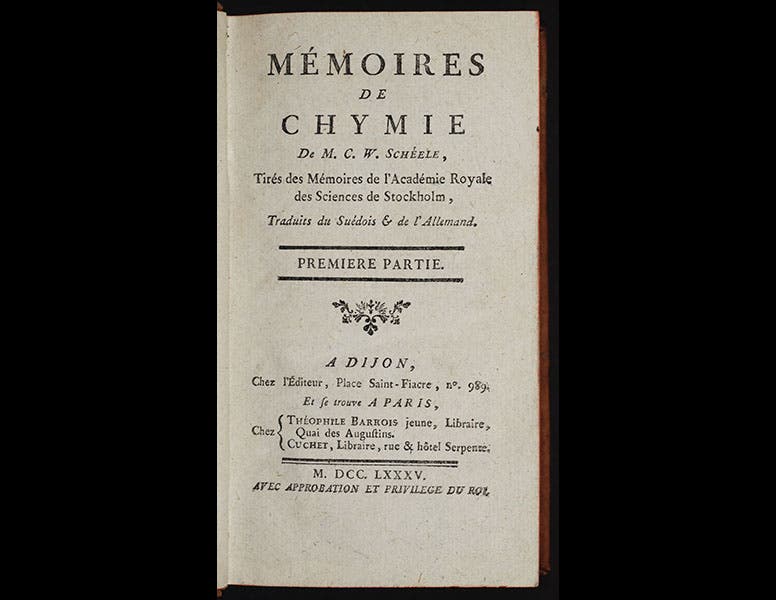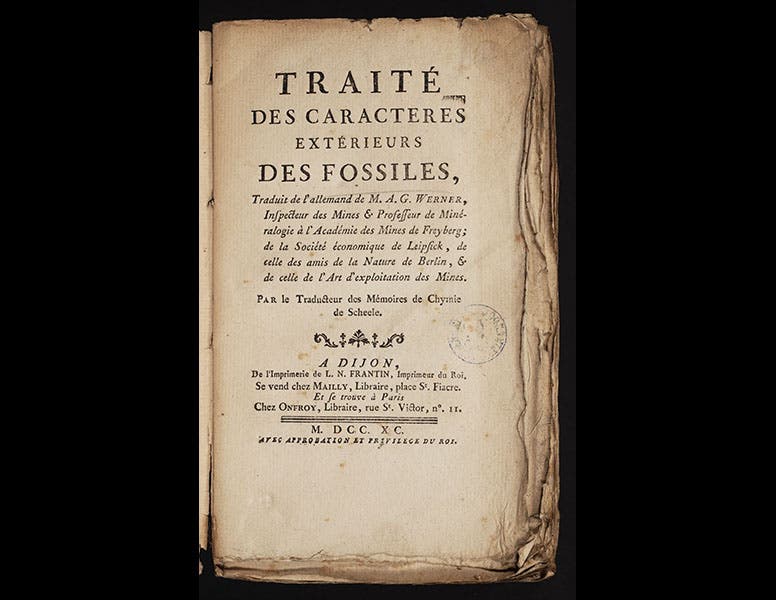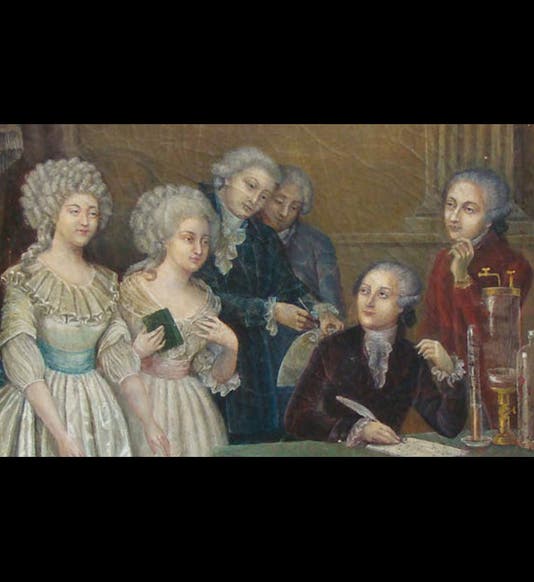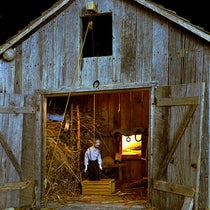Scientist of the Day - Claudine Picardet

Linda Hall Library

Linda Hall Library
Claudine Picardet, a French chemist and translator, was born Aug. 7, 1735. Raised in Dijon, she married a lawyer who was also a member of the Royal Academy of Dijon. Madame Picardet must have been very well educated, for she took part in lectures and salons, and she began translating scientific articles and books into French. Eventually, she seems to have directed a team of translators, whose articles appeared in journals such as the Annales de chimie. Most of the translations were unattributed.
Picardet herself seems to have had a reading command of five languages. One of her most important translations was a set of the chemical essays of Karl Scheele, the Swedish chemist who was one of the discoverers of oxygen. Scheele wrote his papers in German, and they were translated into Swedish and presented to the Swedish Academy of Sciences and published in their journal. Picardet translated many of them into French and they were published in two volumes as Memoires de Chymie in 1785 (second image). We acquired this work earlier this year. According to the "Advertissement", 17 of the 21 memoires were translated by "Mde. P***," which is more credit than she got for most of her translating efforts. Five years later, she translated Abraham Werner's Von den äusserlichen Kennzeichen der Fossilien (Treatise on the exterior characters of fossils) from German to French . It was published in Dijon in 1790, with a title-page note: "Par le traducteur des Memoires de Chymie de Scheele."—“by the translator of the Memoirs of Scheele”—the only external clue that Picardet did the translation. We also have a copy of a French edition of Richard Kirwan's Essai sur le phlogistique (1788); although Madame Lavoisier is usually credited with translating Kirwan’s work, some scholars think that Madame Picardet had a hand in this as well.
When her first husband died in 1796, Claudine moved to Paris and soon married Louis-Bernard Guyton de Morveau, a prominent chemist whom she had known and worked with for a long time. As Baroness Guyton de Morveau (a misnomer, as Guyton de Morveau was not a baron), she continued to translate scientific papers and preside over salons during the reign of Napoleon, until her death in 1820.
There exists a charming 19th-century painting that shows a Parisian salon in action (first image). It was no doubt inspired by Jacques-Louis David’s double-portrait of Antoine Lavoisier and his wife Marie (1788), which is in the Met, since the figures of Antoine Lavoisier and Marie here are taken directly from David's painting (Antoine is seated, Madame Lavoisier at far left). But the Guyton de Morveau's have been added in; Louis-Bernard is on the far right, and Claudine is second from the left, holding a book (which she no doubt translated). Although it is an unlikely scene (Lavoisier went to the guillotine in 1794; the Guyton de Morveau's married in 1798), it still allows Claudine to shake off some of the anonymity that has surrounded her for so many years.
Dr. William B. Ashworth, Jr., Consultant for the History of Science, Linda Hall Library and Associate Professor, Department of History, University of Missouri-Kansas City. Comments or corrections are welcome; please direct to ashworthw@umkc.edu.






